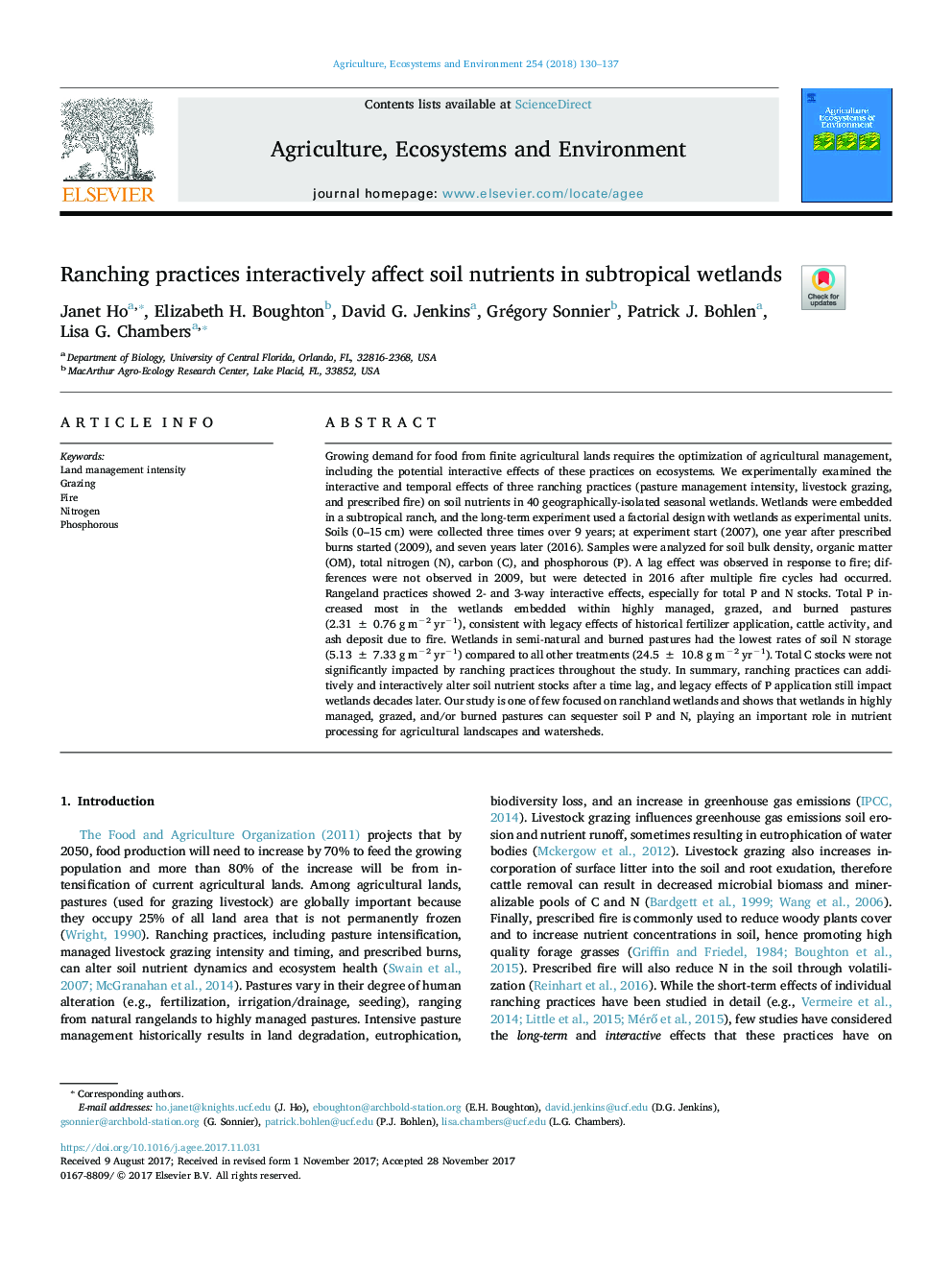| Article ID | Journal | Published Year | Pages | File Type |
|---|---|---|---|---|
| 8487210 | Agriculture, Ecosystems & Environment | 2018 | 8 Pages |
Abstract
Growing demand for food from finite agricultural lands requires the optimization of agricultural management, including the potential interactive effects of these practices on ecosystems. We experimentally examined the interactive and temporal effects of three ranching practices (pasture management intensity, livestock grazing, and prescribed fire) on soil nutrients in 40 geographically-isolated seasonal wetlands. Wetlands were embedded in a subtropical ranch, and the long-term experiment used a factorial design with wetlands as experimental units. Soils (0-15 cm) were collected three times over 9 years; at experiment start (2007), one year after prescribed burns started (2009), and seven years later (2016). Samples were analyzed for soil bulk density, organic matter (OM), total nitrogen (N), carbon (C), and phosphorous (P). A lag effect was observed in response to fire; differences were not observed in 2009, but were detected in 2016 after multiple fire cycles had occurred. Rangeland practices showed 2- and 3-way interactive effects, especially for total P and N stocks. Total P increased most in the wetlands embedded within highly managed, grazed, and burned pastures (2.31 ± 0.76 g mâ2 yrâ1), consistent with legacy effects of historical fertilizer application, cattle activity, and ash deposit due to fire. Wetlands in semi-natural and burned pastures had the lowest rates of soil N storage (5.13 ± 7.33 g mâ2 yrâ1) compared to all other treatments (24.5 ± 10.8 g mâ2 yrâ1). Total C stocks were not significantly impacted by ranching practices throughout the study. In summary, ranching practices can additively and interactively alter soil nutrient stocks after a time lag, and legacy effects of P application still impact wetlands decades later. Our study is one of few focused on ranchland wetlands and shows that wetlands in highly managed, grazed, and/or burned pastures can sequester soil P and N, playing an important role in nutrient processing for agricultural landscapes and watersheds.
Keywords
Related Topics
Life Sciences
Agricultural and Biological Sciences
Agronomy and Crop Science
Authors
Janet Ho, Elizabeth H. Boughton, David G. Jenkins, Grégory Sonnier, Patrick J. Bohlen, Lisa G. Chambers,
